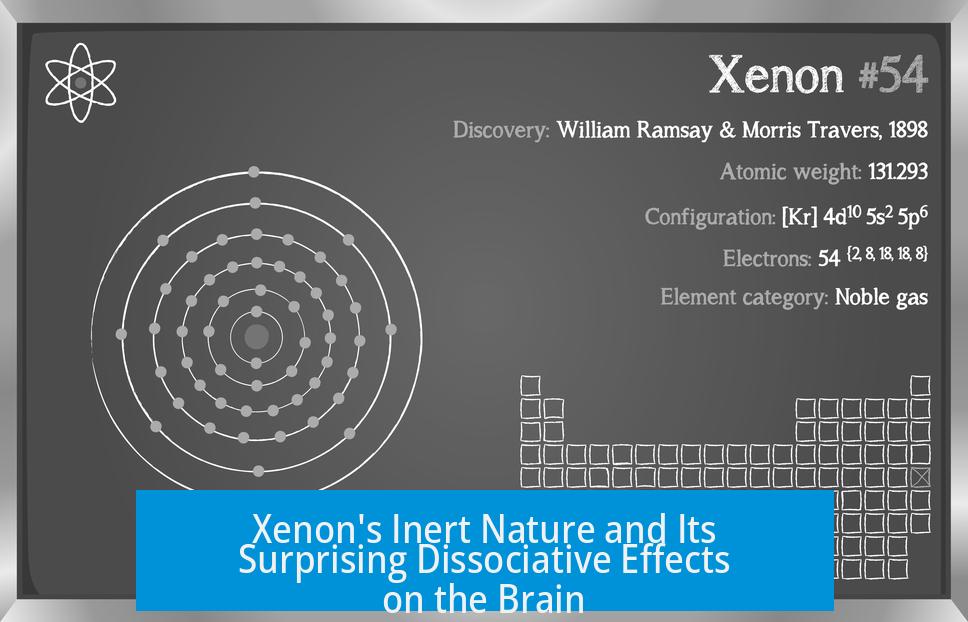Why Does Xenon Produce Dissociative Effects Despite Being a Noble Gas?
Xenon produces dissociative effects on the human brain mainly because it acts as an NMDA receptor antagonist and physically interacts with neural membranes, despite being chemically inert as a noble gas. Its biological activity arises from physical and pharmacological actions rather than classical chemical reactions.
Xenon’s Chemical Inertness vs. Compound Formation
Xenon belongs to the noble gases group, known for minimal chemical reactivity. However, it can form compounds such as xenon tetrafluoride (XeF4), demonstrating it is not completely inert. While chemical reactivity is limited, this exception indicates potential interactions beyond mere inactivity.
Physical Interaction with Neural Membranes
- Xenon dissolves in lipid and protein components of neurons within the central nervous system (CNS).
- This dissolution disrupts the normal function or structure of membranes, altering neuronal activity.
- Unlike typical drugs, it neither forms bonds nor triggers chemical reactions at active sites; rather its physical presence perturbs cell membranes.
This mechanism shares similarity with other inert gases under pressure, such as nitrogen, which can also induce changes by dissolving in CNS lipids.
Pharmacological Action as an NMDA Receptor Antagonist
Xenon exhibits a direct pharmacologic effect by competitively inhibiting the N-methyl-D-aspartate (NMDA) receptor at the glycine binding site. The NMDA receptor regulates excitatory neurotransmission and plays a role in consciousness and perception.
| Effect | Site of Action | Consequence |
|---|---|---|
| NMDA receptor antagonism | Glycine binding site | Dissociative anesthesia and neuroprotection |
This antagonism reduces excitatory signals in the brain, producing dissociative and anesthetic effects typical of drugs with similar action.
Additional Physical and Physiological Hypotheses
- Xenon may physically displace oxygen in tissues, marginally altering cellular respiration and contributing to its effects.
- Its inability to be metabolized or absorbed might lead to transient storage or create microscopic voids within tissues, influencing neural function.
These ideas remain speculative and complement the known mechanisms involving lipid dissolution and receptor antagonism.
Key Takeaways
- Xenon forms few chemical compounds but remains largely inert chemically.
- It dissolves in neural lipid and protein membranes, physically disrupting neuronal activity.
- Xenon selectively antagonizes NMDA receptors at the glycine binding site, causing dissociative effects.
- Additional proposed mechanisms include oxygen displacement and tissue storage.
- Its dissociative effect results from combined physical and pharmacological interactions, not classical chemical reactivity.





Leave a Comment